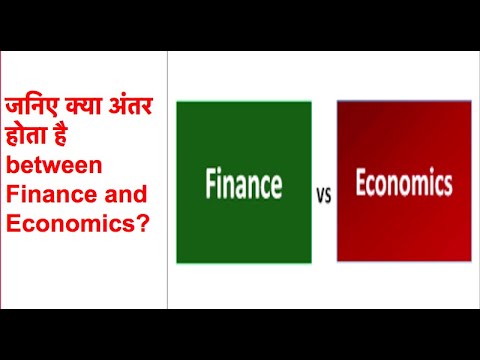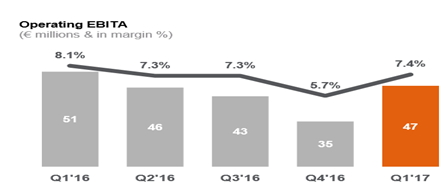Contents
However, in large firms, there are separate department as well as a systematic formal procedure to undertake the assessment process. In addition, the large organization also take notice of personal appraisal of the employee including its emotional and intellectual conduct . Using the performance management systems and tools that are helpful in identifying better-performing employees. Thus the decision for a suitable and available reward motivates the employees to perform better.

Performance management has been identified as a system that creates context for continuous monitoring and measuring activities of individual employees in a firm. Similarly it also measures the performance of the entire organization so that organisational goals are met in an effective manner . Expectancy theory is an essential theory that underlines the concept of performance management (Fletcher & Williams 1996; Steers et al. 2004).
Among these factors are long-term rewards, past favors, sense of loyalty, and fear of losing a job. Individuals look for maximum satisfaction and minimize dissatisfaction based on self-interest. It refers to a person’s perception of the probability that effort will lead to performance. When there is a possibility of certainty of accomplishment of assigned task then E-P will be 1. Similarly, when there is no certainty on the accomplishment of the assigned task then E-P will be 0.
Consequently, this theory helps to map behavioural outcome in respect of organisational training. In other words this theory helps in identifying specific determiners behind a particular behavioural outcome of individual trainees . The viewpoint about inflation and unemployment put forward by Rational Expectations Theory which is the cornerstone of recently developed macroeconomic theory, popularly called new classical macroeconomics. In many organizations, rewards do not directly correlate with performance, limiting the application of this theory. Other parameters also play a role, such as position, effort, responsibility, and education. Firstly, mere reasonable or legitimate expectation of a citizen may not by itself be a distinct enforceable right, but failure to consider and give due weightage to it may render the decision arbitrary.
Applicability of expectancy theory in small and medium scale enterprises
If households expect inflation to pick up in the medium term and they suspect low returns due to low real interest rates, it may be preferable for them to invest in commodities like precious metals, jewellery, etc., than saving in term deposits. In the Indian case, Yadav and Shankar used data from the two household surveys conducted by the RBI, the Consumer Confidence Survey and the IESH, to establish an empirical relationship between inflation expectations and consumers’ spending in India. They found that rising households’ inflation expectations lead to higher current spending and an outlook of reduction in future spending.
The rate of inflation resulting from increase in aggregate demand is fully and correctly anticipated by workers and business firms and get completely and quickly incorporated into the wage agreements resulting in higher prices of products. But, according to the Rational Expectations Theory, which is another version of natural unemployment rate theory, there is no lag in the adjustment of nominal wages consequent to the rise in the price level. The advocates of this theory argue that nominal wages are quickly adjusted to any expected changes in the price level so that there does not exist the type of Phillips curve that shows trade-off between rates of inflation and unemployment. One of the objections to the expectancy model has been that the model is too theoretical to be of practical value.
In this regard, one way is to continuously improve the conduct of these surveys. An item having relatively low weight in the CPI basket may have a disproportionate influence on households’ inflation expectations, if it constitutes a major portion of the households’ baskets, e.g., the sub-groups like ‘pulses https://1investing.in/ and products’, ‘condiments and spices’, etc. Further, households’ expectations about future inflation also vary widely across the geography. Since inflation expectations are mainly affected by the sentiments on food products, a question may arise as to whether they are able to forecast food inflation.
- The theory tends to be idealistic in such a situation and has no practical application.
- Consequently, the levels of real national product, real wage rate, real interest rate, would remain unchanged.
- Since the expectations will be consensual, it would be impossible to make riskless profits on futures trading.
- For example, the future price is the expected spot price and the spot price is nothing by the present value of the expected spot price.
The basic expectancy theory model emerged from the work of Edward Tolman and Kurt Lewin. However, Victor Vroom is generally credited with first applying the theory to motivation in the workplace. It explains how a person selects behavior based on the outcome of previous efforts, What will be the change from resulting in those behaviors, etc. Instrumentalityis connected with the process of rewarding for desired performance outcome. Thus, individuals are motivated to perform works that would provide greater rewards after successful accomplishment.
Interest rate parity
The vertical long run Phillips curve shows that whatever the anticipated inflation rate, the long run equilibrium is at the natural unemployment rate. Suppose government adopts an expansionary monetary policy to increase output and employment. Because it assumes that employees are capable and rationally thinking individuals, this theory helps managers respect their employees’ dignity. They act accordingly according to their beliefs, perceptions, and probabilities.

Expectations and perception play an important role in this theory; what is real and what is actual is immaterial. KYC is one time exercise while dealing in securities markets – once KYC is done through a SEBI registered intermediary (broker, DP, Mutual Fund etc.), you need not undergo the same process again when you approach another intermediary. Valency stands for value, instrumentality is the belief that if we do one thing it will lead to another, and expectancy is the probability that action or effort will lead to an outcome. Psychological appraisals; test the emotional, intellectual and motivational and other personal characteristics of employees. This includes in-depth interviews, psychological test and discussions with supervisors. A review of employee motivation theories and their implications for employee retention within organizations.
Expectancy theory of motivation has been given by
Consequently, the levels of real national product, real wage rate, real interest rate, would remain unchanged. While bias in households’ inflation expectations has been well acknowledged by other studies, this paper establishes the same transaction motive is further subdivided into based on a cross-country empirical analysis. Similar to India, inflation expectations are biased and not efficient in other countries too, like the USA, England, Japan, New Zealand, South Africa, Czech Republic, Philippines and Russia.
Hereby performance appraisal is one of the most crucial key elements focusing on the evaluation of employees and their further development overtime (Ghanbarpour & Najmolhoda, 2013). For an overall effective performance of an organization, the Performance management system encompasses the process of measuring and managing the performance of human resources in an organization. The measurement and management of performance should be motivating enough so that employees perform well and this is where the expectancy theory becomes applicable to PMS. Therefore it is essential for an organization to incorporate mechanisms encountering such elements under the performance management system in order to attain the desired performance goals of employees perennial to the organizational goals. However, in the current scenario, the changing needs of both the employees and the businesses in adopting effective mechanisms proactively.
Friedman’s adaptive expectations theory assumes that nominal wages lag behind changes in the price level. This lag in the adjustment of nominal wages to the price level brings about rise in business profits which induces the firms to expand output and employment in the short run and leads to the reduction in unemployment rate below the natural rate. The expectations hypothesis is the simplest approach but it is also very theoretical and hence not used too much in practice except for understanding the theoretical underpinnings of futures pricing. The expectations hypothesis assumes that the futures price will be equal to the expected spot price on the delivery date.
This indicates that inflation expectations of Indian households are similar in nature to those of other developed and emerging economies, except for the relatively higher bias than in other economies, barring Russia. This paper further throws light on the challenges in using households’ inflation expectations for forecasting inflation. Inflation expectations in India have been sticky as households take the time in trusting that a relatively low inflation era is here to stay. Quantitative inflation expectations in India are formed based on the households’ experiences of food and fuel inflation.
Application of expectancy theory
These rewards include merit pay increases, bonuses, promotions, a small celebration for the job done well, the power of independent decisions, chance to engage in leisure activities or a vacation trip . It is important to examine and understand the appraisal management practices in organization context and size. When expectancy theory is applied to PMS, it aims at current performance and focuses on motivating the employees to perform better. Therefore it is important for employees to know about their assessment process in order to examine their capability in performing a task .
Contango, as you know, exists when the price of futures contracts is higher than the expected spot price on the delivery date. Due to contango, the price of futures contracts with later delivery dates is higher than those with nearer delivery dates. This is why July futures will be at a premium to June and August at a premium to July. For example, the future price is the expected spot price and the spot price is nothing by the present value of the expected spot price. One of the important models that are used in the pricing of futures is the expectancy model.
Key elements of expectancy theory
Households’ term deposits form about half of the total deposits in the banks; recently the share has increased to about 60 per cent. The year-on-year growth in deposits reveals a slowdown from December 2011 onwards, which has started reviving only recently, since December 2017 . In rational expectations theory the economy does not move temporarily from macro equilibrium at A to E in the short run along the short run aggregate supply curve SAS0. When aggregate demand shifts from AD0 to AD1 short run supply curve shifts immediately from SAS0 to SAS1 as a result of immediate and quick adjustment in wages and other input prices due to correct anticipation of rate of inflation. And again due to correct anticipation of the rate of inflation, the rise in wages and in other input prices will be in proportion to the rate of inflation.
